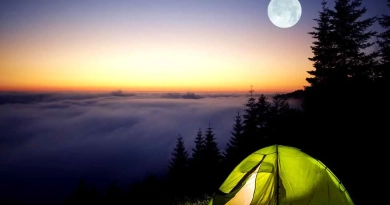
How Do I Scout for Deer?
A combination of art, patience, and observation.
There I was, standing at the edge of the forest, the early morning light just beginning to filter through the trees. The world was waking up, and so were the deer. As I inhaled the crisp air, a question formed in my mind, a question that every dedicated hunter must ponder: “How do I scout for deer?” This isn’t just a task; it’s an art form, a meticulous blend of observation, patience, and understanding of the natural world.
Scouting for Deer: The Art and Science
Scouting for deer is more than simply walking through the woods. It involves knowing the deer’s habits, understanding their environment, and interpreting the signs they leave behind. It’s an intricate blend of observation, patience, and knowledge that leads to successful hunts.
1. Deer Behavior and Patterns
Seasonal Movements:
Due to their biological needs and environmental factors, deer behavior changes with the seasons. During the summer, deer focus on feeding and accumulating fat reserves. They frequent areas with abundant food sources, such as agricultural fields or lush meadows. As autumn arrives, their behavior shifts dramatically due to the rut, the breeding season. Bucks become more territorial and roam extensively in search of does, often abandoning their usual caution.
Daily Routines:
Deer are crepuscular animals, meaning they are most active during dawn and dusk. Their natural instinct to evade predators and forage when visibility is poor drives this behavior. However, during the rut, bucks can be active throughout the day, driven by the urge to find and court does. Understanding these patterns is crucial for effective scouting.
2. Environmental Influences
Food Sources:
Identifying what deer eat and where these food sources are located is fundamental to successful scouting. Early in the season, deer might focus on agricultural fields, orchards, or areas with lush green vegetation. As the season progresses and natural food sources dwindle, deer turn to hard mast, like acorns from oak trees, which are rich in fats and energy. Scouting these areas can reveal high-traffic zones and feeding spots.
Water Sources:
Deer require water daily, making rivers, streams, ponds, and other water sources key locations for scouting. Identifying these water sources and the paths leading to and from them can provide insights into deer travel patterns and frequent crossings.
Cover:
Deer need cover to feel safe from predators. They prefer thick brush, dense forests, and areas with ample undergrowth for bedding and hiding. Scouting these bedding areas is essential, but it must be done with care to avoid spooking the deer and causing them to change their routines.
Exploring the Options and Overcoming Obstacles
Scouting for deer involves considering various options and overcoming specific challenges that may arise during the process.
1. Pre-Season Scouting
Pros:
- Pattern Establishment: Pre-season scouting allows you to establish the deer’s patterns and behaviors without the pressure and noise of the hunting season.
- Minimal Disturbance: By scouting early, you reduce the chances of disturbing deer close to hunting season, which helps maintain their natural patterns.
Cons:
- Changing Patterns: Deer patterns can change from pre-season to hunting season due to changes in food sources, human pressure, and weather. What you observe in the summer might not hold true come fall.
2. In-Season Scouting
Pros:
- Current Information: In-season scouting provides the most up-to-date information on deer movements and behaviors, reflecting the current conditions and pressures.
- Immediate Application: The intelligence gathered can be applied immediately to adjust hunting strategies and improve success rates.
Cons:
- Risk of Disturbance: There is a higher risk of spooking deer and altering their patterns during in-season scouting. Care must be taken to minimize disturbance.
Implementing the Best Scouting Techniques
With years of experience and countless hours spent in the woods, I’ve developed a strategy that balances both pre-season and in-season scouting.
1. Use Technology
Trail Cameras:
Place trail cameras in strategic locations such as travel corridors, feeding areas, and water sources. These cameras provide valuable insights into deer movement patterns and times. Setting up multiple cameras can help you create a comprehensive map of deer activity across your hunting grounds.
Mapping Software:
Use digital mapping software to identify potential deer hotspots and plan your scouting routes. Tools like Google Earth, OnX Hunt, and HuntStand can help you visualize the terrain and identify key features like ridges, valleys, and water sources. This data can guide your physical scouting efforts and help you pinpoint the most promising areas.
2. Physical Scouting
Look for Signs:
Identify deer tracks, rubs, scrapes, and bedding areas. Tracks indicate travel routes, while rubs show where bucks have been marking their territory by rubbing their antlers against trees. Scrapes are areas where bucks communicate with does through scent-marking. Bedding areas, often found in dense cover, indicate where deer feel safe and spend their resting hours.
Observe from Afar:
Use binoculars or a spotting scope to observe deer from a distance. This minimizes disturbance and allows you to see their natural behavior. Position yourself in elevated spots or on the edges of fields where you can watch deer without being detected.
3. Scouting Strategies
Morning and Evening:
Focus your scouting efforts during the early morning and late evening, when deer are most active. This increases your chances of spotting them and understanding their movements. Position yourself downwind and remain as quiet as possible to avoid alerting the deer to your presence.
Quiet and Stealthy:
Move quietly and wear scent-blocking clothing to minimize your presence. Deer have excellent senses, and any disturbance can alert them to your presence. Plan your routes to avoid noisy terrain and practice moving slowly and deliberately.
4. Note-Taking
Record Observations:
Keep a detailed log of your observations, including dates, times, locations, weather conditions, and any deer sightings or signs. This information can be invaluable for identifying patterns and planning future hunts. Note any changes in behavior or movement that could be attributed to environmental factors or hunting pressure.
Resources and Tools Needed
To effectively scout for deer, certain tools and resources are essential:
- Trail Cameras: Invest in high-quality trail cameras that offer good resolution and battery life. Look for models with infrared capabilities for night-time observation.
- Mapping Software: Use software like Google Earth or specialized hunting apps to plan your scouting routes and mark key locations.
- Optics: Binoculars and spotting scopes are crucial for long-range observation. Choose models with good magnification and light-gathering capabilities.
- Scent Control Products: Use scent-eliminating sprays and wear scent-blocking clothing to reduce your scent profile.
- Field Notebook: Keep a notebook or digital log to record your observations and insights. Organize your notes by date and location for easy reference.
As the sun climbed higher and the forest came alive with the sounds of the day, I realized that scouting for deer is not just about finding the perfect spot; it’s about connecting with the environment and understanding the intricate dance of nature. By using a combination of technology and traditional scouting methods, and by paying attention to the subtle signs and patterns in the wilderness, we can increase our chances of a successful hunt. Each scouting trip becomes a story, a chapter in the ongoing narrative of our relationship with the wild. Through patience, persistence, and respect for the land and its inhabitants, we become not just hunters, but students of nature, ever learning and adapting in the pursuit of our quarry.






